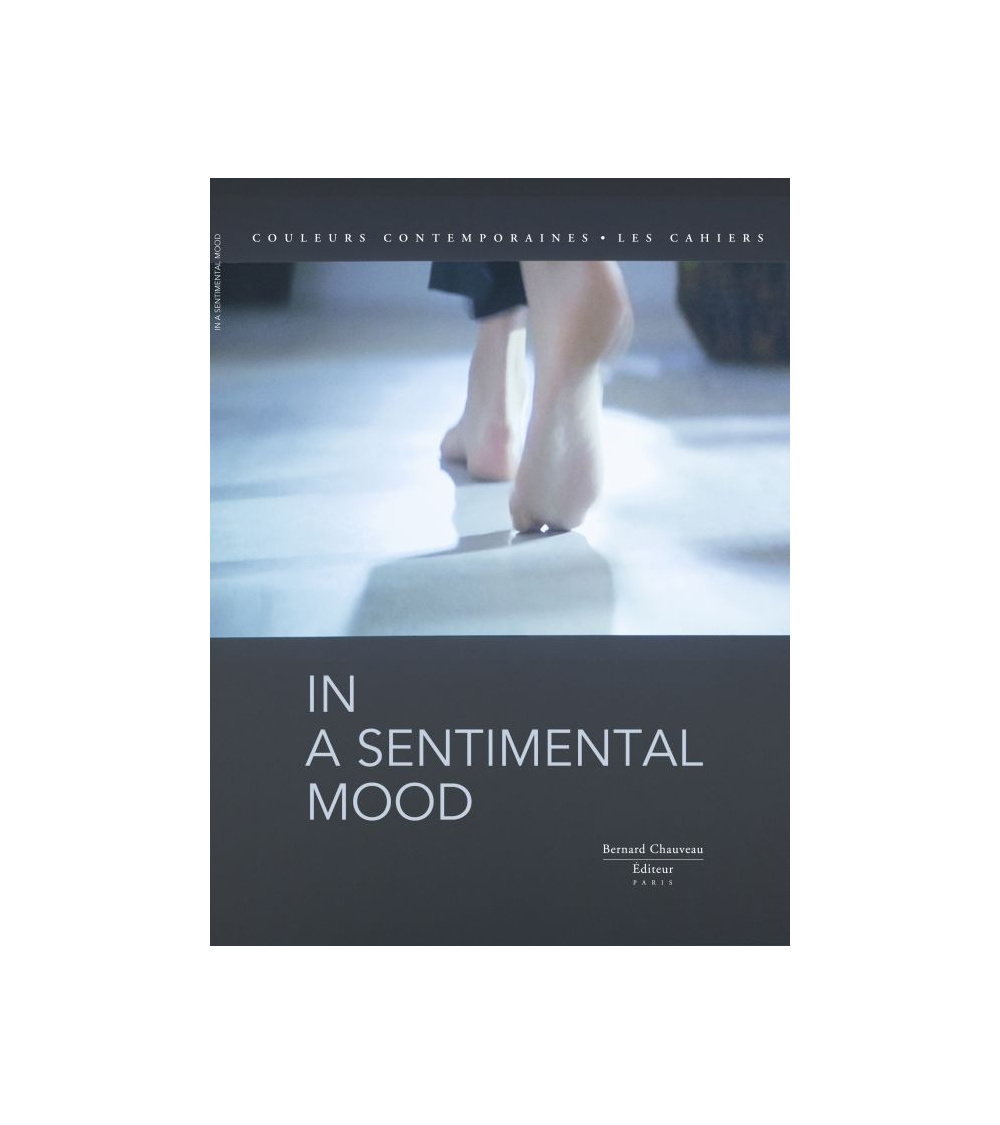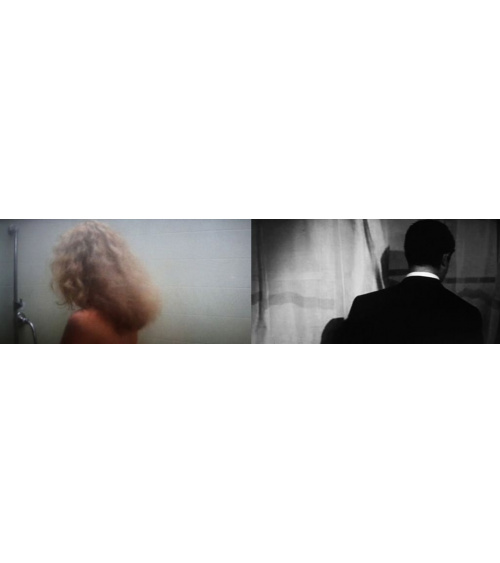In a Sentimental Mood
Named after the song by Duke Ellington and John Coltrane, the “In a Sentimental Mood” exhibition offers a journey through every facet of love.
Named after the song by Duke Ellington and John Coltrane, the “In a Sentimental Mood” exhibition offers a journey through every facet of love.
Gathering the work of eight artists from different generations and backgrounds – Felix Gonzalez-Torres, Jiri Kovanda, Myriam Mechita, Daphné Navarre, Marylène Negro, Jack Pierson, Alessandro Raho and Jimmy Robert – the exhibition conceived by Vanessa Desclaux explores the experience of love in its universality as well as ultimate singularity.
Through films, installations, sculptures and portraits, the exhibition brings together desire and longing, sensuality and melancholia, using contemporary imagery to express the complexity of human feelings. By drawing on sounds, visual or gestural codes, each exhibit develops a unique approach to exploring the limitations of language in expressing the depth of an emotion.
The exhibition “In a Sentimental Mood” invites visitors to wander through a series of spaces, guided by a constellation of objects and images into worlds where desire, memories and fantasies are reconstructed words of dedication or loneliness uttered, loved and loving bodies glimpsed.
Reinventing the love letter, tapping the poetic possibilities of an object, conjuring a loving embrace – these are some of the ways chosen by the artists to capture the many moods of romantic reverie.
Data sheet
- Number of pages
- 32
- Size
- 15,5 x 21,5 cm
- ISBN
- 9782363060990
- Edition
- 800 copies
- Publication date
- 2013
Gonzalez-Torres (Felix)
Born in 1957, dead in 1996. Felix Gonzalez-Torres’ prolific artistic output critically invests the space of conceptual art and minimalism, while challenging their political and social dimensions. His unique body of work testifies to formal concerns around the status of the work of art, by confronting it to such questions as the double, the industrial object and ephemerality. Making use of a wide range of formal media – painting, sculpture, and billboards – his work combines political activism and the most intimate emotional experiences. Some everyday objects are recurrent in his work: clocks, mirrors or light bulbs are often presented in pairs as a symbol of otherness and relationship. Piles of candy and stacks of paper are made available to visitors, who are encouraged to take away a piece of the work with them. This makes for a profoundly human and intimate work, in line with Gonzalez-Torres’ insistence that works of art be constantly recreated and transformed, challenging the notion of art as formally fixed, and of the author as its sole creator.
Kovanda (Jiri)
Born in 1953. Lives and worj in Prague. Since the 1970s Jiri Kovanda has produced performances and installations inspired by human actions and gestures which were often carried out in public spaces and would generally go unnoticed. Talking about the work Theatre which he created in 1979 in front of the Prague National Museum, he wrote "I follow a predefined script. Gestures and movements are chosen so that passersby have no clue that they are watching a performance". The discreetness, even self-effacement of those interventions harkens back to the context in which Jiri Kovanda first developed this artistic approach: the economic insecurity and political censorship in Czechoslovakia, as well as the conceptual art forms typical of that time. The work of Jiri Kovanda continues to point light-heartedly at everyday objects and gestures to underline their poetic potential.
Mechita (Myriam)
Myriam Mechita was born in 1974; she lives and works between Paris and Berlin. In her work, Myriam Mechita materializes the intensity of her perceptions and emotions. Thus, her installations deploy fantastic landscapes before our eyes, manipulating patterns and symbols reminiscent of vanitas paintings, contrasting life and death, happiness and torment. The forces of our desires and fantasies take shape in a world inspired by a whole variety of pictorial traditions and literary works. In a recent series of sculptures, Myriam Mechita brings viewers into the intimacy of her feelings. Using various devices, Myriam Mechita composes love letters on books by authors such as Jacques Ancet, Isidore Ducasse or Gabriel Garcia Marquez.
Navarre (Daphné)
Daphné Navarre was born in 1982; she lives and works in Paris. Daphné Navarre creates her works from fragments of lives and stories which she deletes and censors to reflect on what is left: a figure, meaning and memory. Tensions between presence and absence play a central role in her work: by applying subtractive gestures to the object at hand, Daphné Navarre highlights and reveals details which are ripe with symbolism. The "presence through absence" motif is used by Daphné Navarre to shed light on general as well as personal matters, always leaving the viewer some "room for thought*"
Negro (Marylène)
Marylène Negro’s work straddles the line between art and cinema. All the work of Marylène Negrobears the stamp of a unique perspective on literature, photography and film. Marylène Negro treats time as a material, patiently and accurately exploring the open space between the stillness of photography and the motion that characterizes film. During the shooting, Marylène Negro does not decide if the film will animate one or several images. It is only later, upon editing, that the structure of the film will be finalized. Fragmented, accelerated or slowed down, each of the Marylène Ngro's films plunges the viewer into time warps. Hovering between the figurative and the abstract, her photographs play with all the elements that make up an image: density, shapes and contours, color contrasts, shadow and light. Whether the images are taken from her window or brought back from a faraway place, like in Sao Jorge or Atlanta, for the artist, it is always about an inner journey.
Pierson (Jack)
Jack Pierson was born in 1960. He lives and works in New York and in Southern California. Fascinated by such themes as celebrity, melodrama or loneliness, Jack Pierson infuses his work with references to lost love, identity, desire, or faded glamour. He transposes his thoughts and emotions on mediums as diverse as photography, collage, drawing and painting. He also invested the field of sculpture by creating pieces with old advertising sign letters, found furniture and objects. The portrait is a recurring motif in the work of Jack Pierson, though his personal experiences find themselves fundamentally altered in the process. Even his "Self Portrait" series is in fact dramatically fictional: none of the images Jack Pierson works on are portraits of himself. Whether aloof, melancholy or sensual, these images of childhood, adolescence and adulthood put a spell on the viewer.
Raho (Alessandro)
Alessandro Raho was born in 1971; he livs and works in London. Since the 1990s, Alessandro Raho has painted portraits with dedication and persistence. Portraits by Alessandro Raho, made from photos taken in his own studio, rely on a realism typical of photographic images and attempt to capture the deeply human feelings that sometimes transpire in a look, a facial expression or a posture. Alessandro Raho never attempts to represent a particular type of person. His models are people who surround him and those he has a chance to observe. In their countenance, Alessandro Raho seeks to capture secret desires, what he describes as a kind of defiance. Fascinated by the way advertising, especially in fashion and music, taps into a whole range of human emotions, and by its impact on our individual behaviors and aesthetic choices, Alessandro Raho deliberately references this in his work through the choice of a given pose, garment or accessory.
Robert (Jimmy)
Jimmy Robert was born in 1975; he lives and works in Brussels. Jimmy Robert’s body of work explores the complex links between photography, film, performance and sculpture. Though not formally trained in dance or choreography, Jimmy Robert consistently puts his own body to the test in performances that summon multiple social, political and intimate experiences. By doing so, Jimmy Roberts questions the way in which identities are constructed. His body, as well as those of his collaborators become the medium for formal research on a grammar of gestures, using the body as a material among others used by the artist, such as paper. Jimmy Robert’s visual language has continuously expanded upon contact with the work of other artists whose influence he cites openly: Bas Jan Ader, Yoko Ono, Marguerite Duras or Yvonne Raine.
No customer reviews for the moment.











